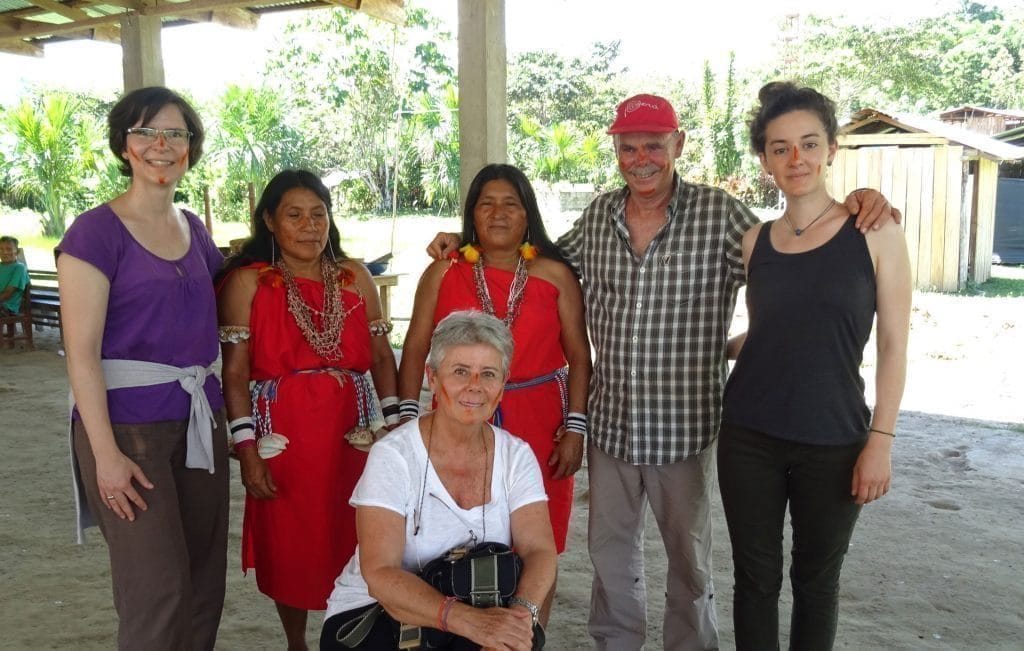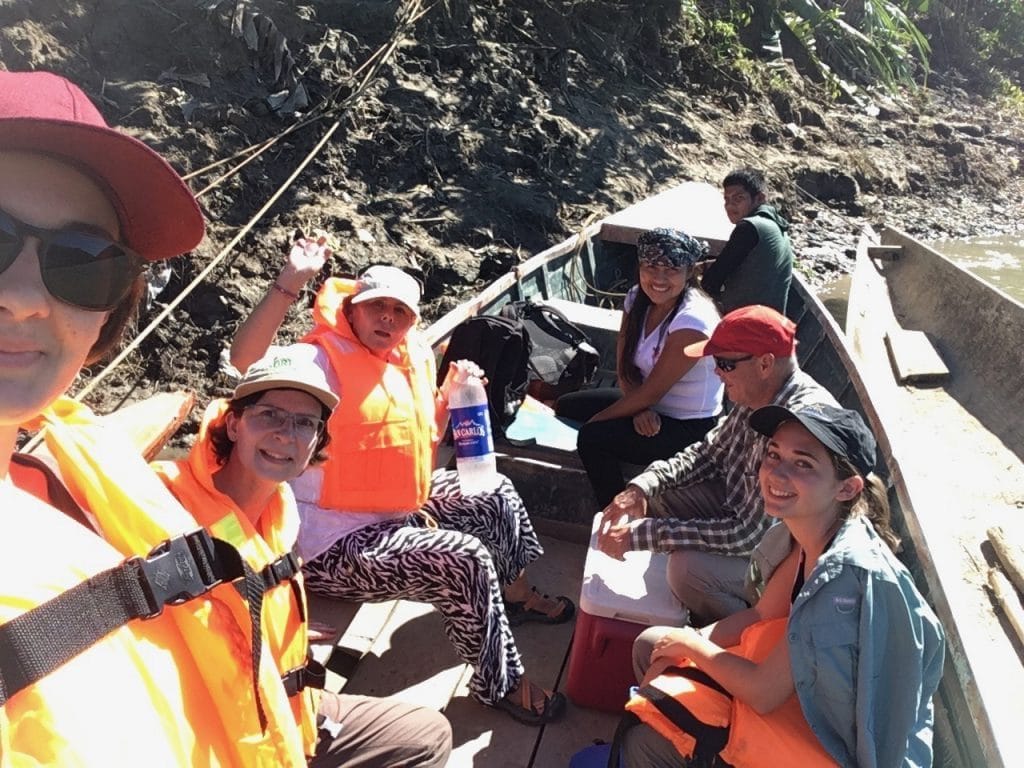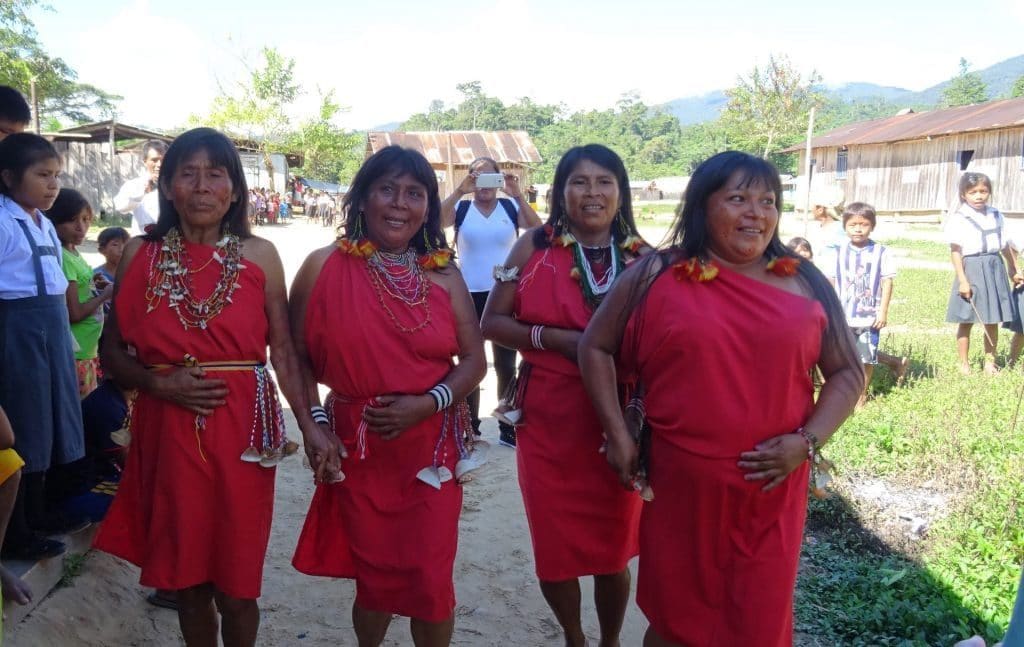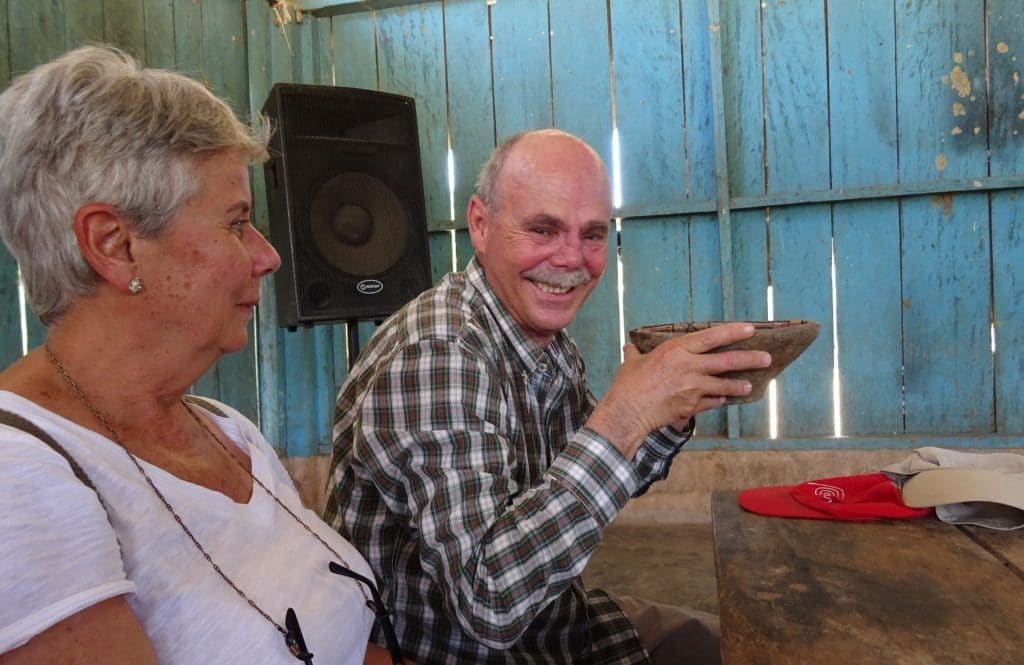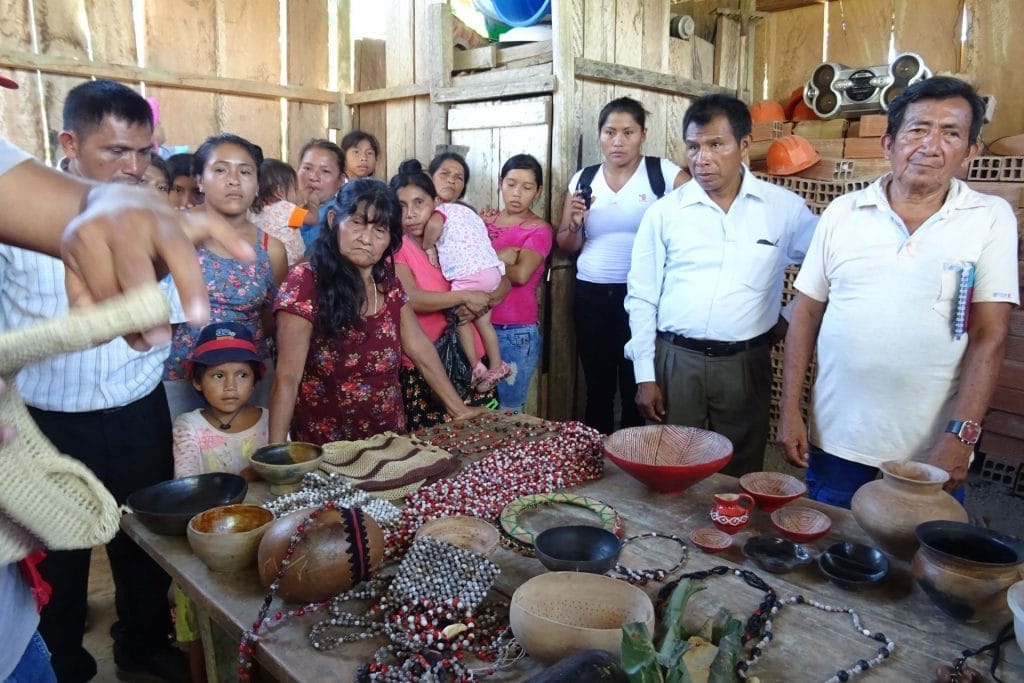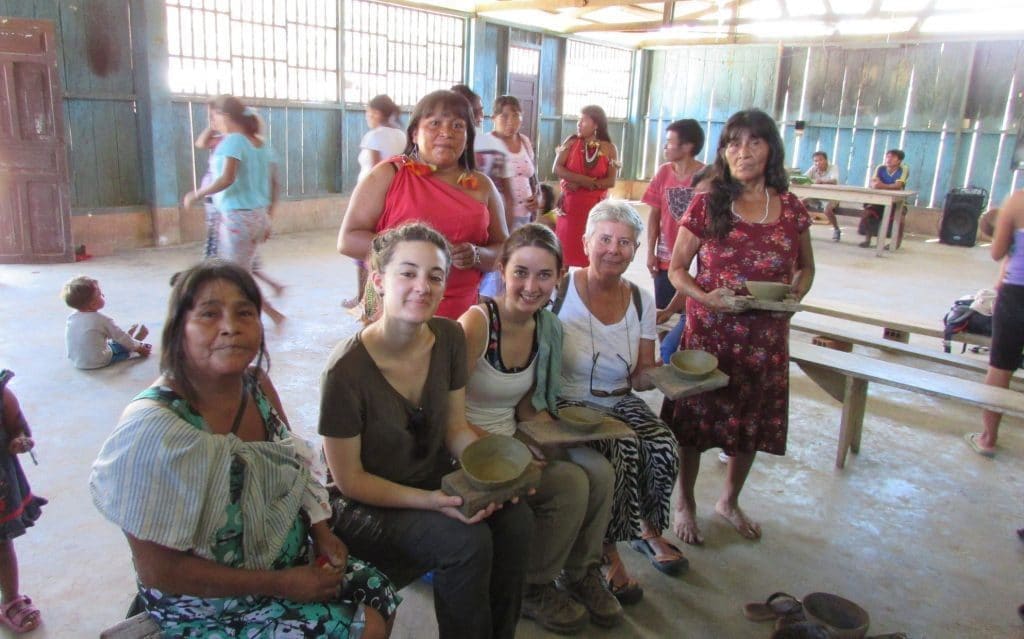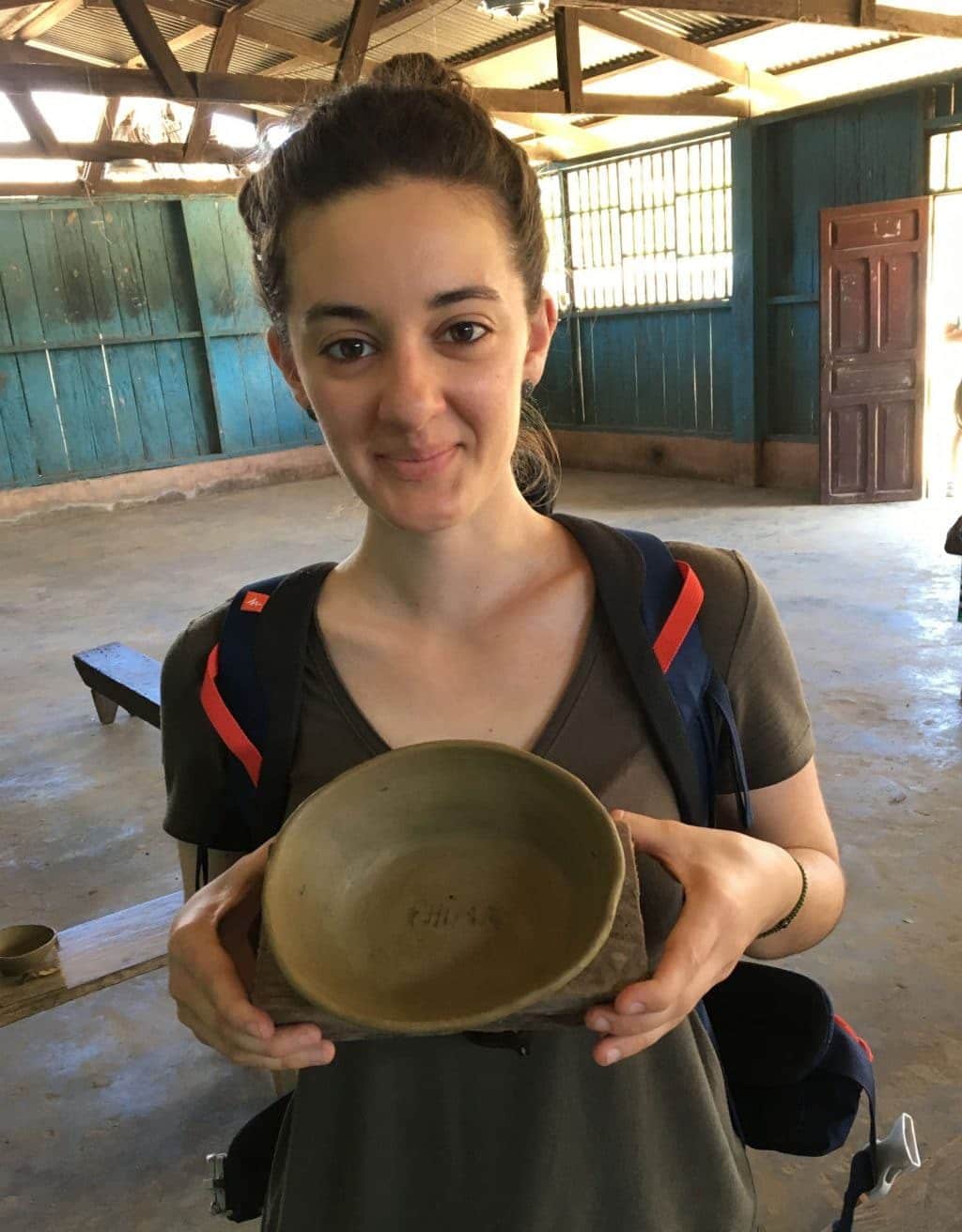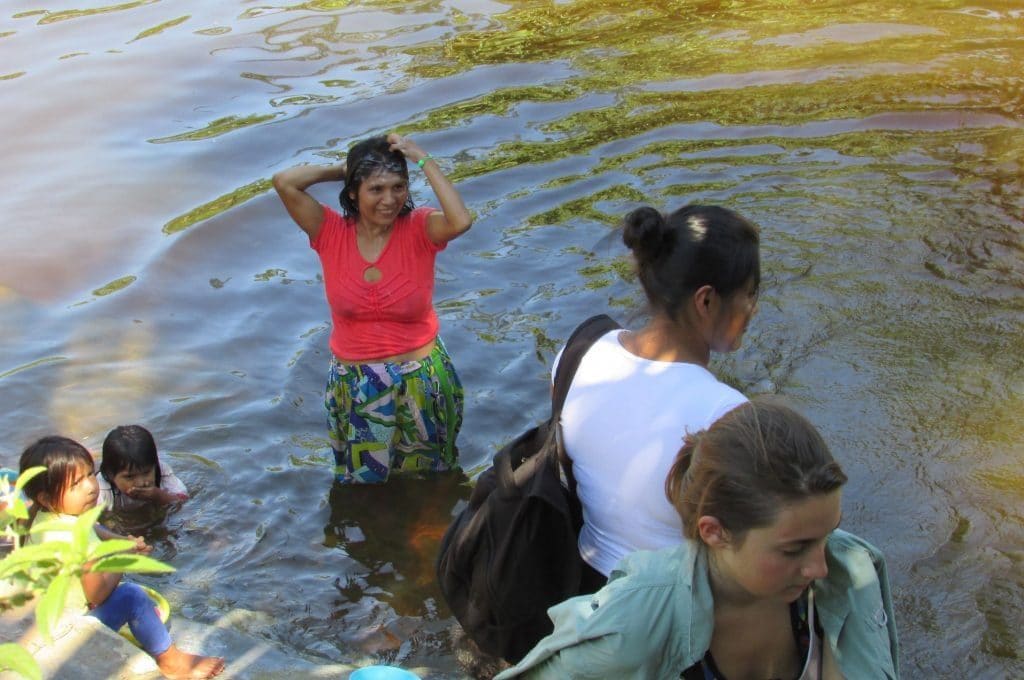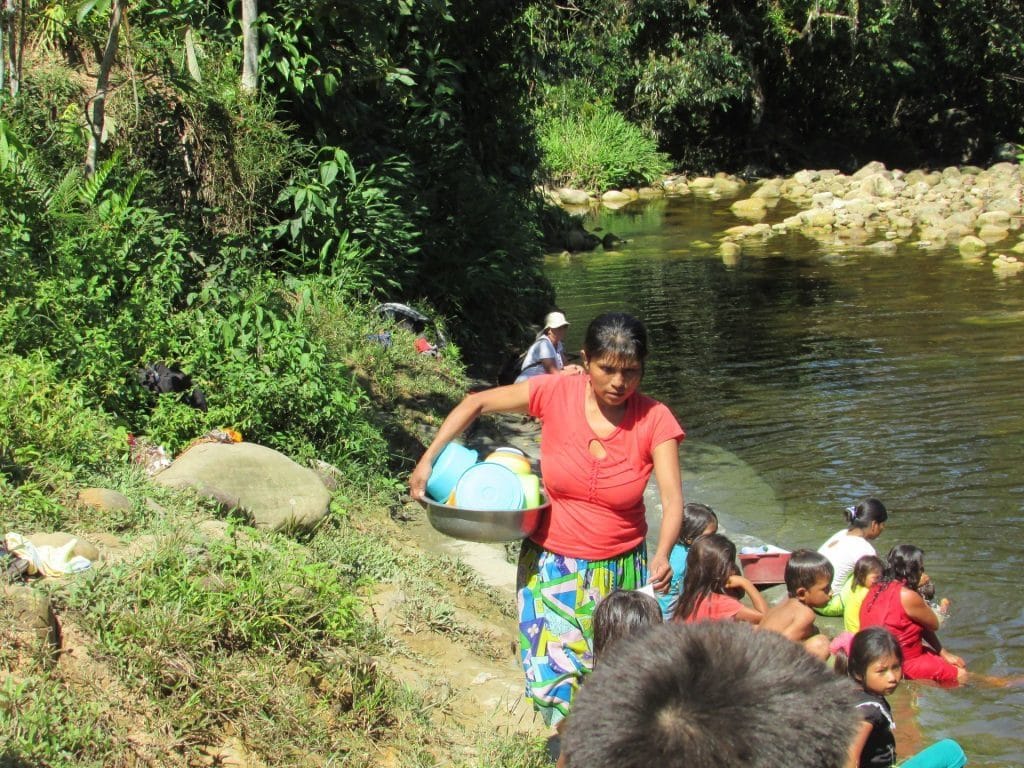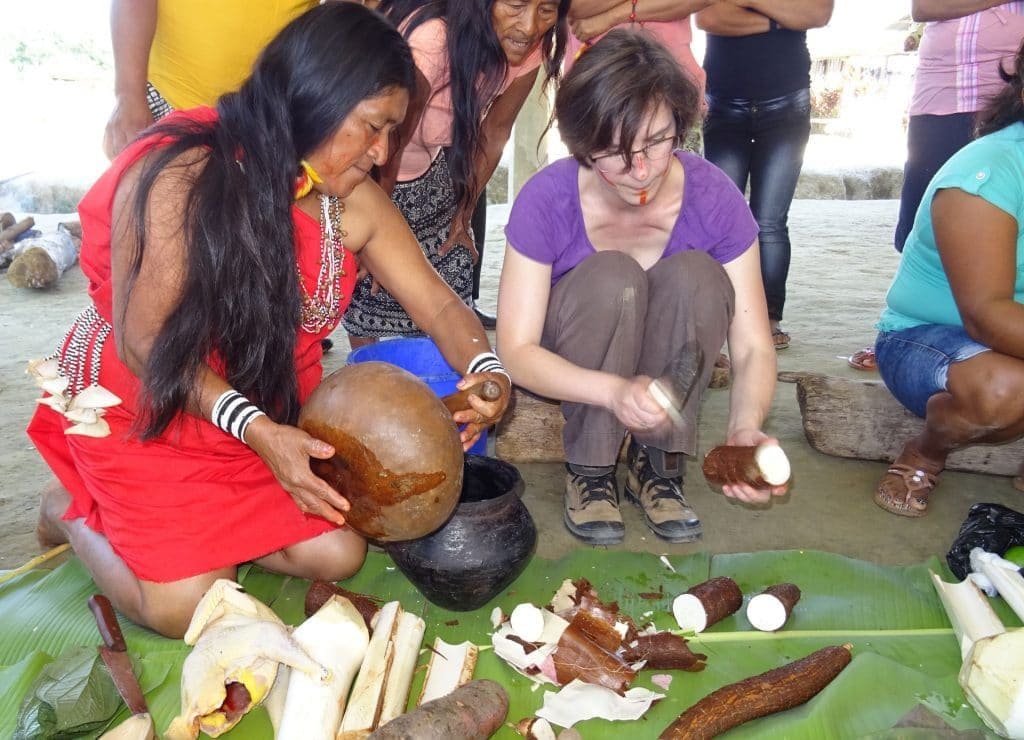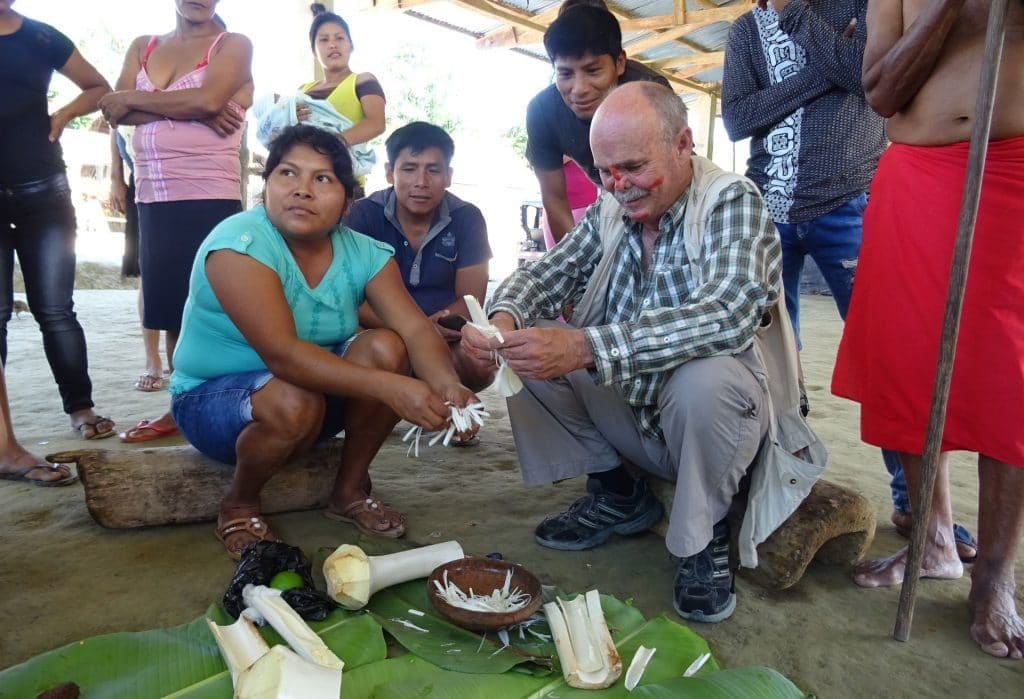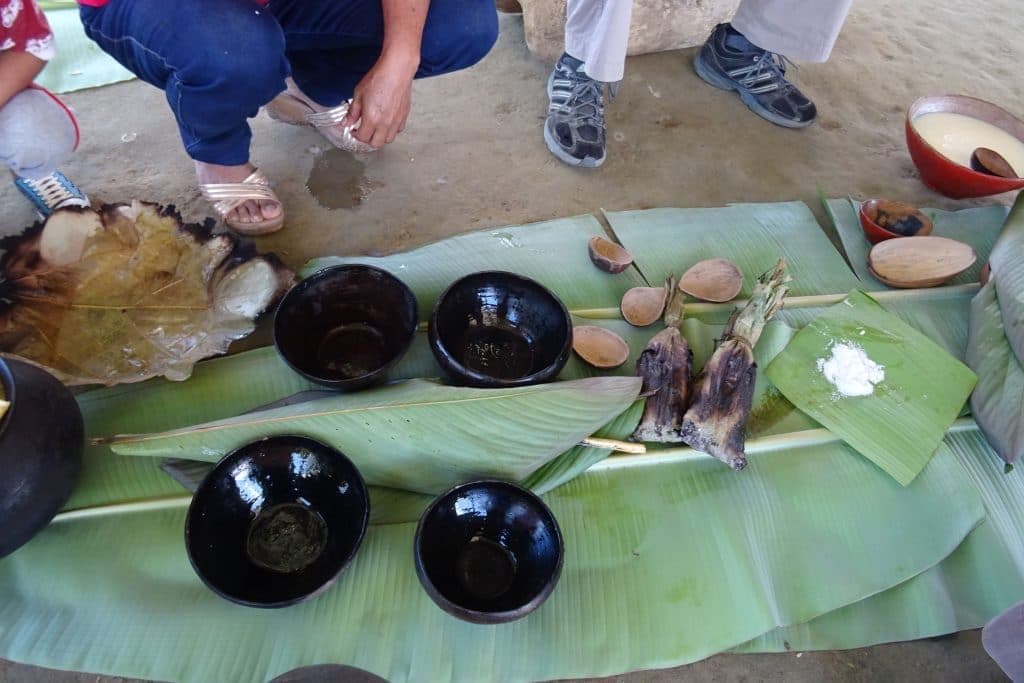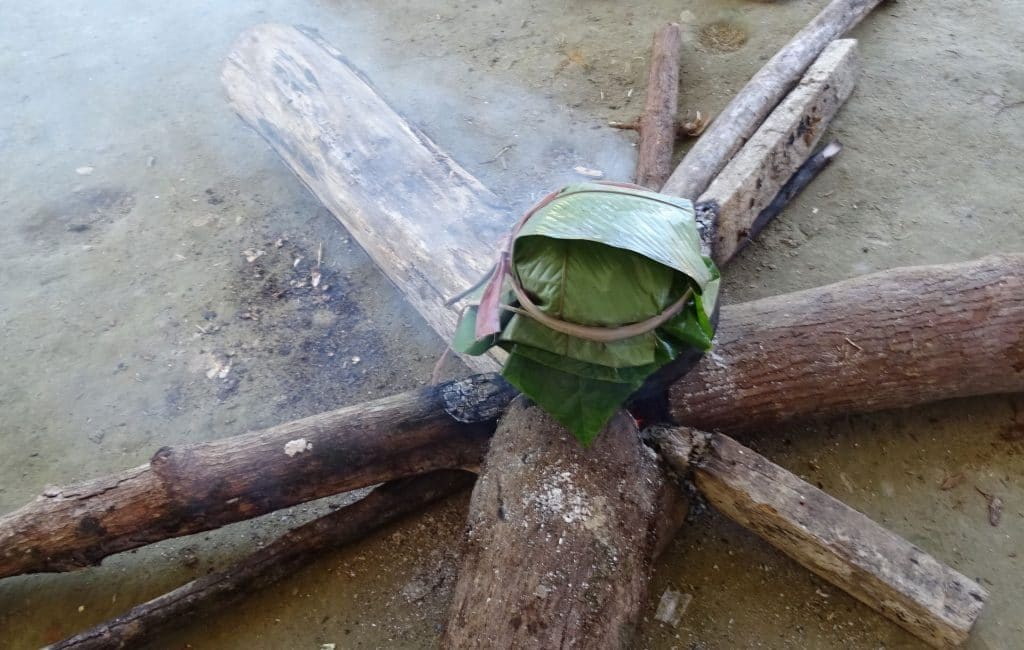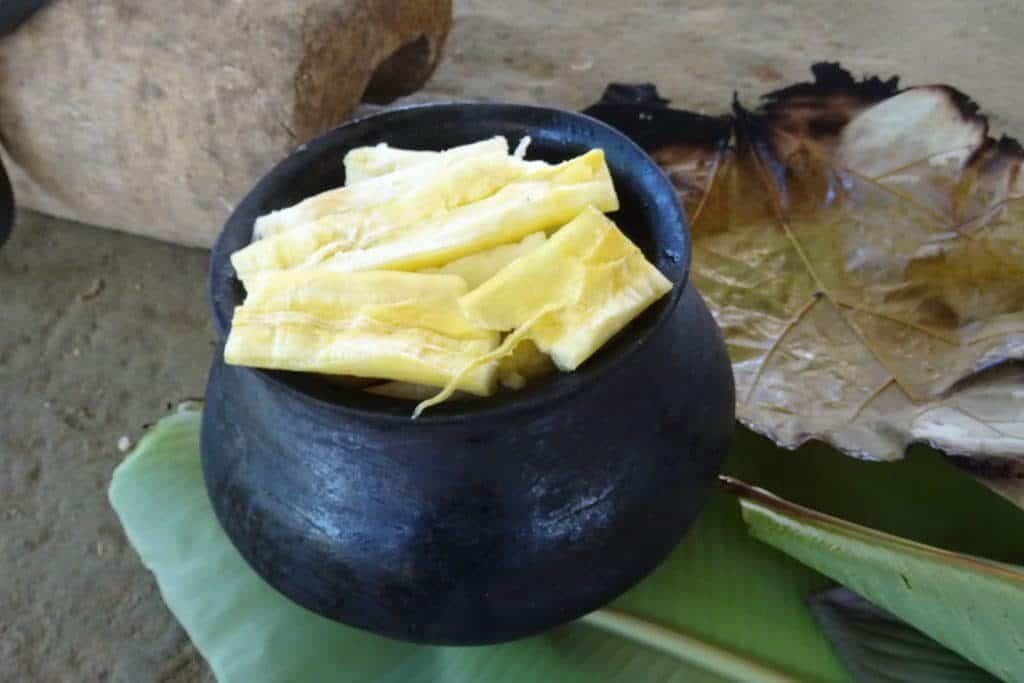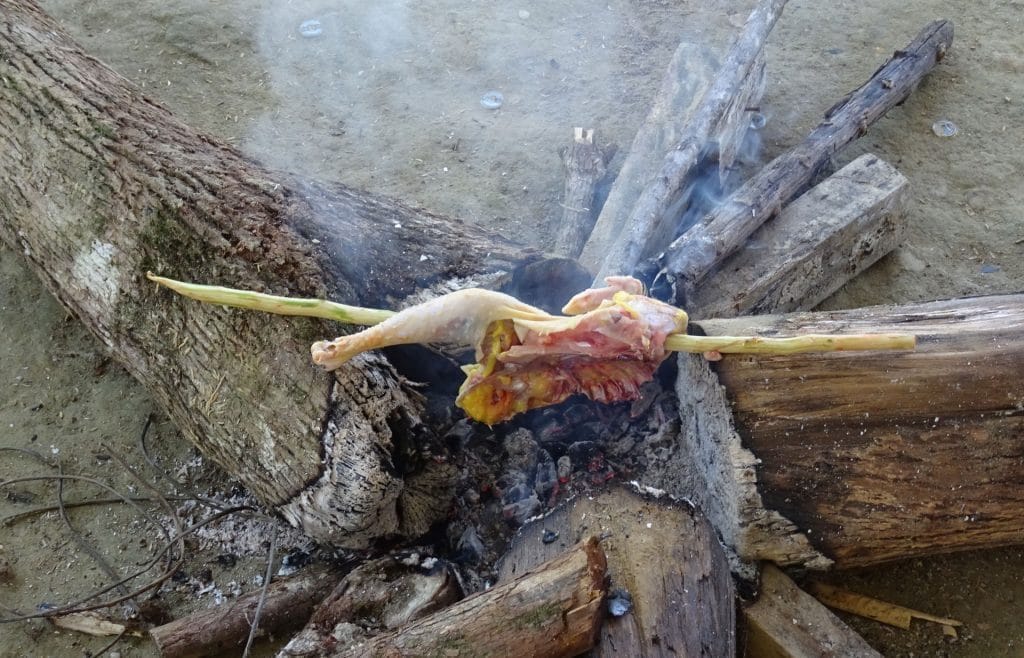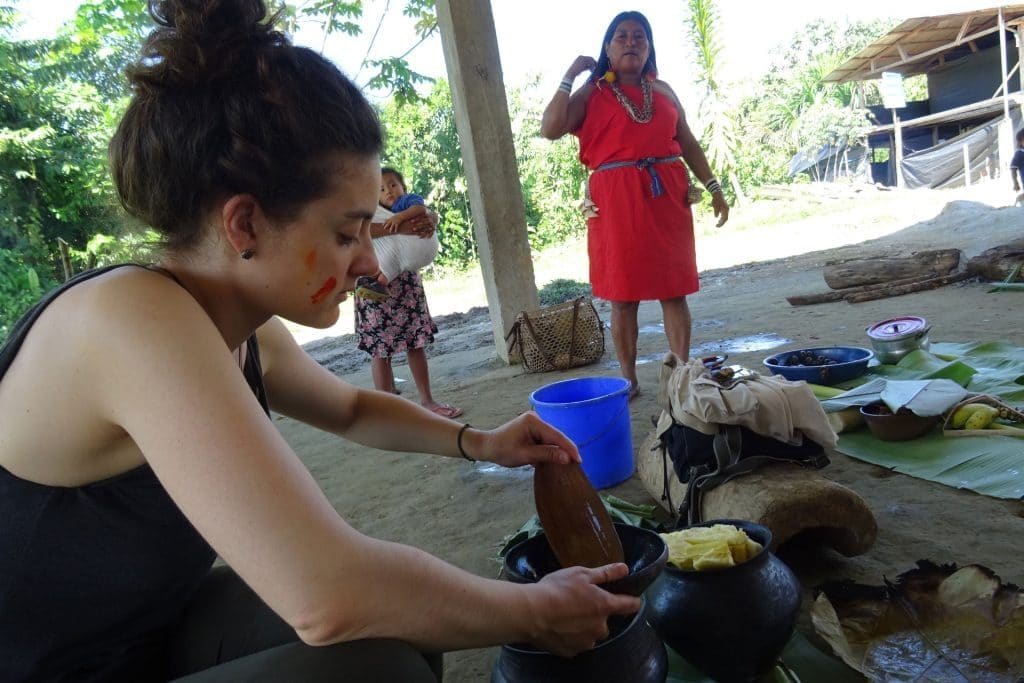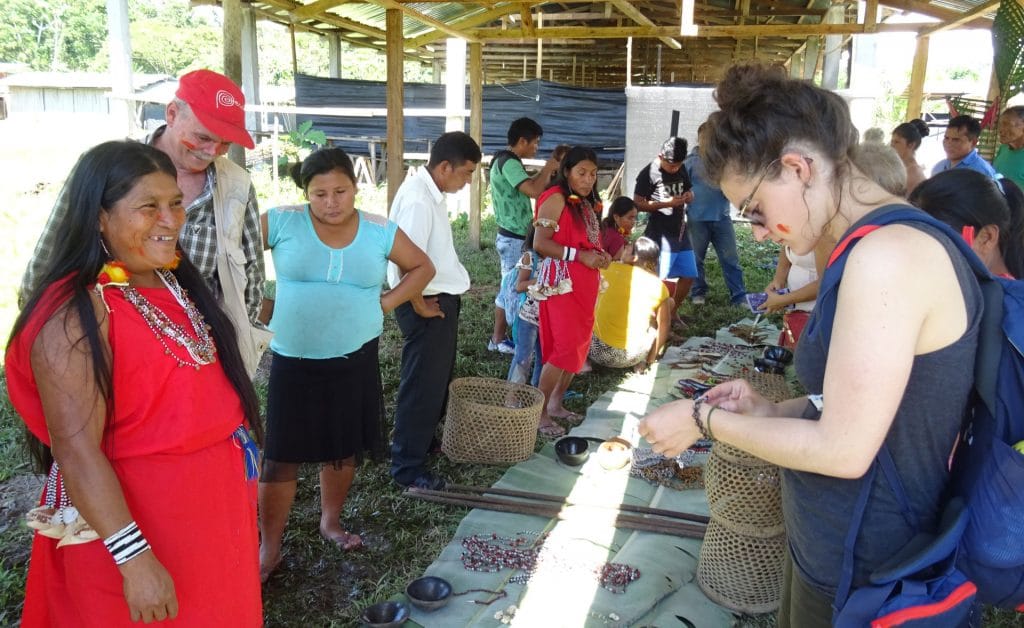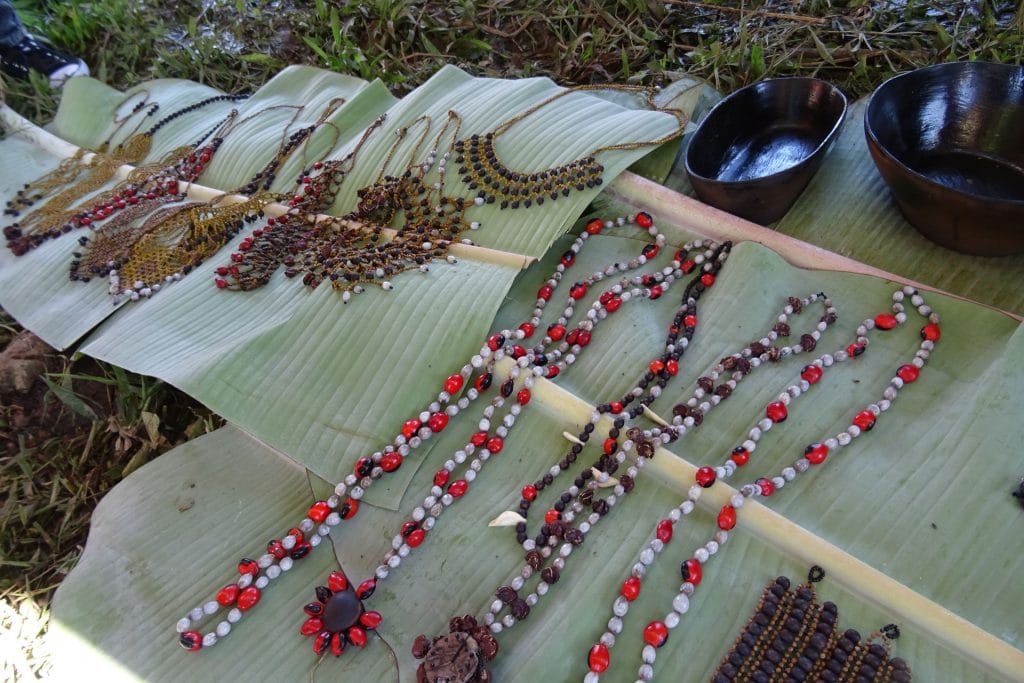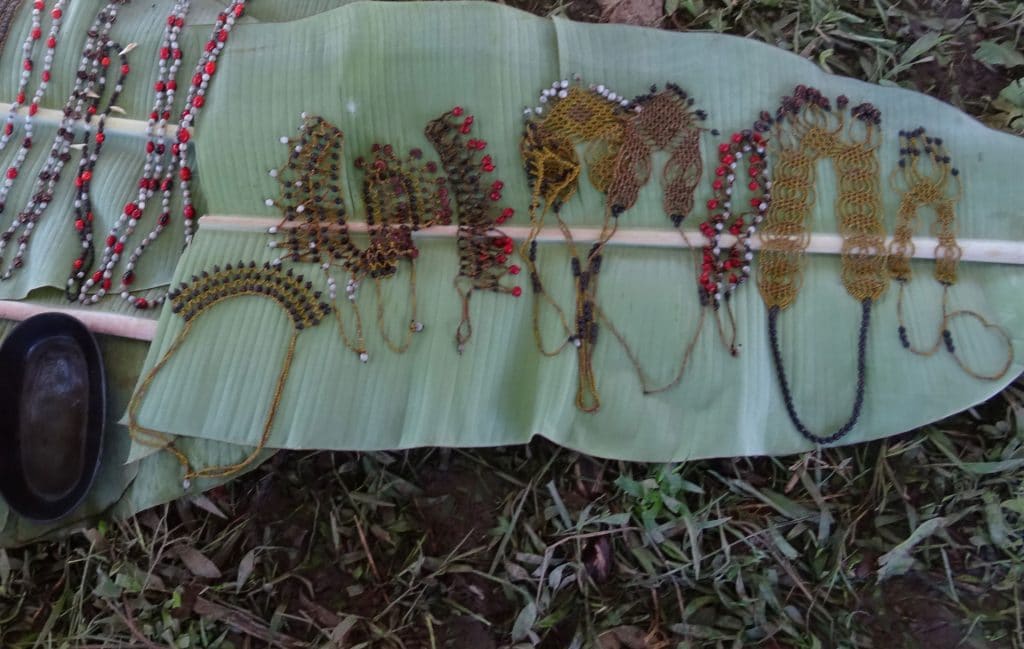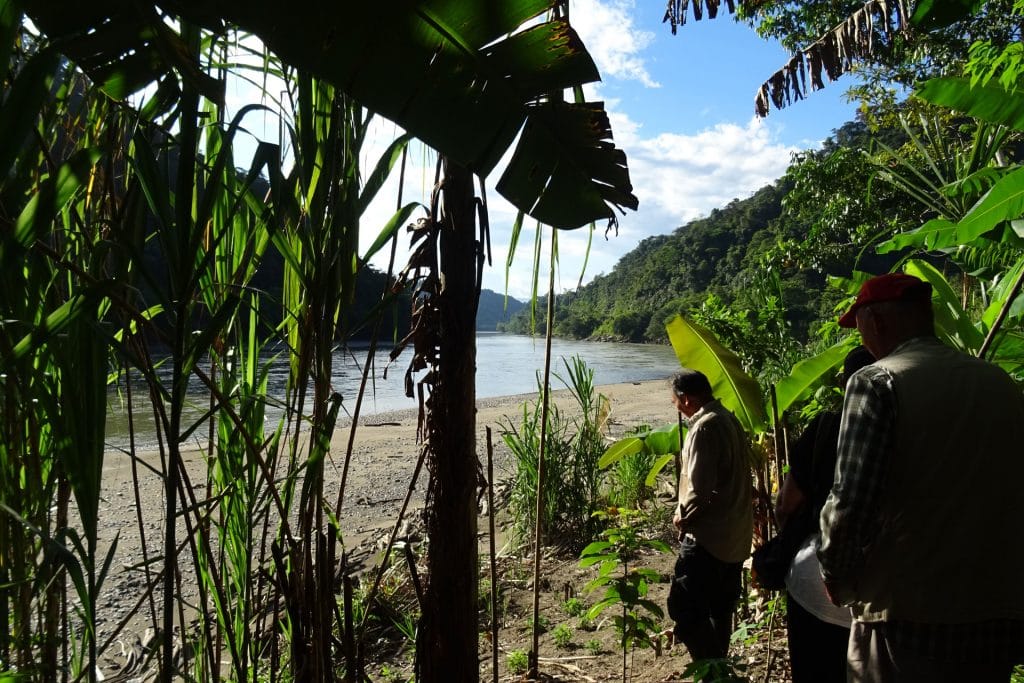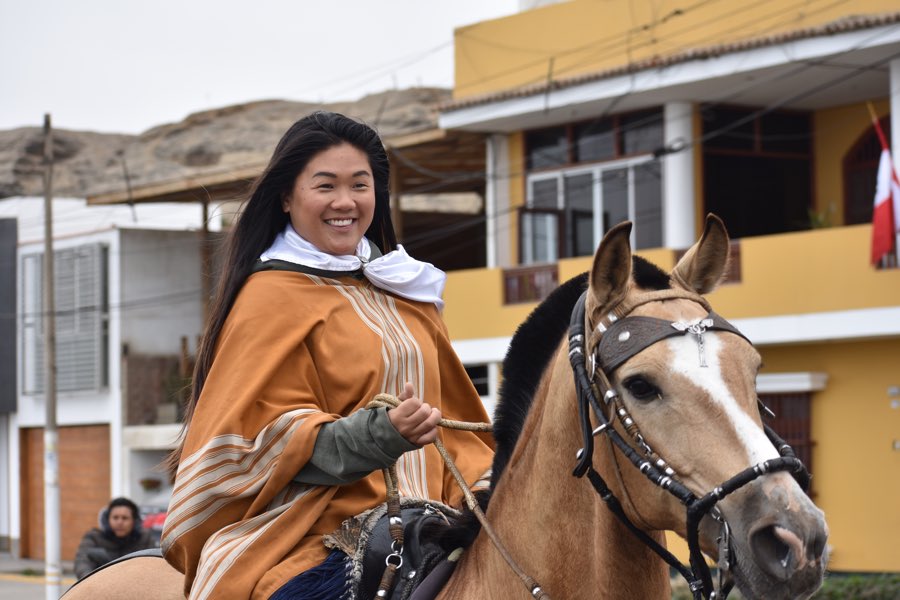Always looking for new experiences for our travelers, we have planned a trip to the Peruvian Amazonia. Obviously we are talking about the Amazonia in Northern Peru 🙂
There were five of us: Léa, in charge of the training of our partner communities in Cuispes and Leymebamba, our friends Nora and Paul of the Tambo Sapalanchan hotel in Lamud, their niece Alexa from the United States and myself.
Organisation before our departure
Like this, perfectly well prepared, we arrived day 1 of our trip to the Peruvian Amazonia in Chiriaco. From Chachapoyas, our starting point, it takes about 5 hours, without breaks. It is rather close, considering that we are in Peru, don’t you think so ?
Claire Marie had booked a hotel in Chiriaco for us, which was really nice. I had a single room, spacious with fan, private bathroom and cold shower. Indeed, in Chiriaco we do not need hot water. And again, we can not complain, it was between 28 and 32 ° during our stay. Rather reasonable temperature ! Rosita, our guide, came to greet us and we were to meet the next day at 8 am for breakfast at a local restaurant.
Day 1 – Yupikusa Community
How to get there
After breakfast, it is by motor-taxi that we reach, in 20 minutes, the small port on the Rio Chiriaco. In the morning on the moto-taxi it is rather cool, I advise to bring a small vest. At the port we change the means of transport. A rowboat, a Chalupe, is waiting for us. We put our lifejackets on and off we go. Of course, you can go without jackets, but there are several stories about visitors who came when the river was at its peak and there were accidents. This information is to be taken seriously, hence the vest – a good point for the Nugkui association!
The boat trip is beautiful! The landscapes of the Peruvian Amazonia pass inf front of us us, the mist dissipates on the heights. Regularly we see “peque-peque”, these long wooden canoes, on the shores. This actually means that there are communities in the forest behind. The jungle is green, but there is not ‘a’ green, but many and beautiful shades of this color. Sometimes there are people on the beach, preparing huge bunches of banana for sale “in town”. They waive to us and we waive back.
Arrival in Yupikusa
After a 20-minute boat ride, we dock at the Yupikusa community. It looks like it is the beginning of the school day, because many children in uniform are passing by.
We walk about 5 minutes and arrive at the village itself. We see solar panels and Rosita tells us that they work (!) and that they give electricity to the village. At the front of several houses, we notice a small panel with a trash bag drawn, indicating that we must throw the waste in the bag – interesting!
A little further, we see the preparation for a new traditional roof. There are palm leaves that are drying and already prepared to cover a house.
Welcome committee
We arrive in the center of the village where the welcome committee is waiting for us. We cross a hedge of children and are welcomed by four ladies in traditional dress that dance, take us by the hand and show us the way to their communal lounge. The dress of these ladies consists of a red dress and handmade jewelry using berries and seeds around the neck, but also around their feet. This produces rhythmic noises during the dance.
In the lounge, we have the honor of a welcome speech in awajun language, translated into Spanish by Rosita. The latter also tells us about the Nugkui association thanks to which we are here. Then it is my turn to say a word of thanks for the fact that they welcome us to their community. It is very hot in the communal living room, especially as its roof is not made of palm branches, but of metal sheets. As a result, the heat is concentrated and I perspire in large drops.
After the speeches comes the fateful moment – we are served masato. This is this typical drink in the Peruvian Amazonia. Yucca is chewed by the women of the community and then fermented with sugar water. In short, we dip our lips and thank politely. And it is already our turn to dance with the ladies, I’m afraid our show is rather mediocre, but the awajun audience seemed to enjoy 🙂
Right after we continue our visit in another small house, always followed by the children and inhabitants of the village. On a table they present us their crafts, but also vegetables and some typical dishes.
Food
There is not a lot of diversity of food in the Amazonia . However, they prepared us:
- Sachapapa, a kind of yucca, one of the daily ingredients of the Awajun cuisine in the Peruvian Amazonia.
- Of course we also find suris (large larvae that are here a delicacy). Apparently they taste nutty, and can be eaten on a skewer, or even raw with palm hearts.
- There is also chicken cooked in vegetable leaves.
- And palm tree (as at home palm heart, but here in full), also cooked in leaves and firewood.
- Another specialty is the egg, also cooked in leaves.
Ceramics
First you have to know how to make your clay. You mix it with the ash of a special tree, so that when firing the pot, it does not break. In this community, they make ceramics with or without varnish. The varnish is also natural and makes the dish brighter.
The villagers show us some models of bowls which, according to their form, are used for different things.
- So the flat bowl is used to rinse your mouth or to wash your teeth
- A large dish is used to cook yucca or fish,
- A kind of jug to serve water or chicha, a typical drink.
- The big bowl is used for masato (what we already saw.)
Jewelry
By observing the jewelry, we can appreciate the work and the finesse that you need to make bracelets out of seeds. We also note different headdresses, especially for men. These headdresses were used for village ceremonies.
Ceramic workshop
We return to the large communal room for a ceramic workshop. Sitting on a bench, we are shown by the ladies how make small bowls. We work on a wooden board as a support, once the clay has been mixed with ash.
- First you have to make a ball and then turn it into a round base of the dish.
- Then make “long sausages” where all the art is not to break it in the middle and spiraling it on the base. This is how you will then make the walls of the dish.
- Now you “only” have to smooth the outside, then the inside of the dish with a yucca bark moistened with saliva so that the spirals close well and without holes.
- At the end, we must refine the edges, remove the surplus.
- The pottery now has to dry for several days.
- The ladies burn the ceramic in the oven with a lot of wood. They would put the ceramics to be burned in the middle and when the wood is all consumed, it’s ready! I am not sure if it is this simple, but so they tell us!
The clay that is not used is preserved in banana leaves so that it does not dry.
Our meal
Once the ceramic lesson is over, we’ll get back to the table for lunch this time. In fact, they serve us the dishes we saw in the room before and they also grilled us three suris (the big worms, yes yes).
We eat mostly yucca and palm tree, but Lea is adventurous enough to taste the suri. Well, it is not her favourite …
Swimming in the river
After the meal, we walk 5 minutes to the village river where there are already children and adults swimming, washing dishes or laundry. Léa, Alexa and Paul let themselves be tempted and bathe fully dressed, as do many villagers. Some of the children just jump naked into the water.
It is already time to go back and we walk to the river bank where our boat awaits us. Around 5 pm we arrive at Chiriaco. Time for a cold beer at Rositas and some rest before dinner.
Day 2 – Umukai Community
Today, we leave again by motorcycle taxi, but today there will be no navigation on the river. After 15 minutes, we arrive at the community of Umukai / Nazareth.
Our welcome
We get off the motorcycle taxi and are accompanied to little wooden benches in Umukai’s big communal hall. The roof of the living room is much higher than yesterday and open on all four sides. The heat is therefore rather bearable. Women and this time also men in traditional dress welcome us and paint us our cheeks with red color. The color is made from a large seed / fruit, it’s fascinating.
After that, they show us a traditional dance and we finish together. Of course, here too, we are entitled to Masato.
The president of the Nugkui Association is from the village of Umukai and gives us a special speech, followed by the president of the Umukai Crafts Association. It is incredible and extremely touching to hear how the women feel honored by our presence.
Cooking class in the Peruvian Amazonia
Who wants to start?
I volunteer for chicken and yucca. Here I sit on my bench peeling the yucca, cut it in half before putting it in a large ceramic pot, the latter made by the ladies of the community. Once the pot is filled, it is closed with a banana leaf. We string with a thread made of plants and put it on the fire that is already prepared in a corner of the communal hall.
I notice that their fire is made differently than at home. Not in a triangle, but on the ground and in a star. So we can put the pot on it – great!
Then my “helper” cuts the chicken in half and I put it on a wooden stick that goes also on the fire.
Everybody hands on in the kitchen!
At the same time, Paul is preparing the palm chonta into “long spaghetti”. Seasoned with lime juice, this will be one of my favorites.
Now it’s Lea’s turn to prepare the fish. A charitable soul has kindly killed the fish and it is now a question of wrapping them in leaves to put them to grill. They are prepared according to two recipes: one natural, and the other with herbs, which our guests call the awajun salad. The packaging with the leaves is an art, and in the end, it is still necessary to tie well to finally put everything also in the fire.
Nora prepares the caldo de gallina in a large pot with water and herbs as seasoning.
Lea, being the most adventureous of us, is tempted by a snail grilled on the fire, but it seems that it has nothing to do with French snails with garlic and butter.
During all this time, we had one of the Awajun ladies each helping and guiding us. The other members of the community were very close, always ready to lend a helping hand. At the end we were brought a large pot of water to wash our hands.
The “kitchen” is cleaned by taking the large banana leaves and throwing them into a hole a little apart. That’s responsible tourism!
Our Awajun meal
Then the ladies put two new banana leaves on the floor next to our “kitchen” and we move our banquettes. They place the caldo de gallina soup and the cooked yucca, the grilled fish and the skewered chicken on the table. Paul adds lime to the palm tree and we are ready to eat. Miammm !!
We get each a nice black ceramic bowl (made by the women) and spoons made out of pumpkin to eat our caldo de gallina. The rest of the food we eat easily with the fingers. The grilled fish has a special aroma after it was grilled in the leaves. It’s really good and we enjoy our meal. Finally, we eat a banana, freshly harvested from the tree.
We also get another large bowl of masato, which we ignore discreetly. Once we are no longer hungry, the women deserve the table and the masato. They bring everything to a nearby table, and now it is up to the villagers to eat.
Handicraft – Jewelry and Fine ceramics
Visit of the Chacra
Finally at 3 pm it starts to rain. A real tropical rain, the children come out dancing, with gusts of wind and big drops, a real show!
So, when we leave for the Chacra, it is almost 4 pm. We continue for about 20 minutes by motorcycle taxi. The air has cooled after the rain, and I regret not having taken my vest. (The wind is cool with the driving speed).
Upon our arrival, Sr. Antonio awaits us and shows us his chacra, right by the river. The light is beautiful and we walk along the sandy beach. Just to give you a little idea of the trees and plants that are on the property of Sr. Antonio, in the Peruvian Amazonia, I will quote:
- Coconut
- Pineapple, guayaba, tangerines and many other fruits we do not know here
- Sugar cane
- Cocoa
- Peanut trees
- Medicinal plants
- Wheat for hens
- Sachapapa (like yucca)
- Turmeric,
- Nogals (a kind of nut)
Back at his house again, he offers us coconuts to drink. It’s super refreshing. Once emptied, Rosita opens them for us and we eat the flesh, inside. Yummy.
When we leave, it’s almost dark. Tonight we meet up with Rosita for dinner and exchange our addresses.
Conclusion
The two communities in the Peruvian Amazonia made us feel very special, they pointed out that they do not get many tourists, but that they would like to have more access to tourism, not only in their community, but also to sell their crafts.
I know that a stay in the Peruvian Amazonia is not for everyone. But the experience is really unique. We are going to work on a program which includes for the visitors 2 days of activities before continuing the stay towards the mountainous part of this same region Amazonas, capital Chachapoyas.
What to pack ?
- Waterproof jacket
- Sun screen
- Mosquito repellent
- Walking shoes
- Lightweight clothing to protect against mosquitoes and heat
- A small pharmacy kit
- A vest (for the boat or moto-taxi, it can be a little cool)
- Spare clothes (in case of rain)
- A swimsuit, a towel (if you want to swim)
- Toilet paper (there are none in communities)
- Medications for stomach problems – you never know!
- Nutritious snacks (for some people, the local meals are not nutritious enough due to the socio-economic and environmental context, Awajuns do not have enough food to eat abundantly)
- A lamp – during our stay, every night around 6:30 pm, the electricity was cut off. So it is really useful to have a flashlight!
Tips for visiting the Peruvian Amazonia
- Best season to visit: Between May and October, in the dry season.
- There is not necessarily a toilet, rather “holes”. Prepare yourselves.
- You can not always wash your hands. Get wipes or antiseptic fluid.
How to get to the Peruvian Amazonia ?
From Jaen
From the Jean airport, it takes two hours by car to Bagua Grande by traveling by private car. And from Bagua Grande you have another two hours to go to Chiriaco.
If you travel in colectivo, you have to change in Bagua Chica.
From Chachapoyas
Count five hours by car from Chachapoyas to Chiriaco, always assuming there are no obstacles on the road.


